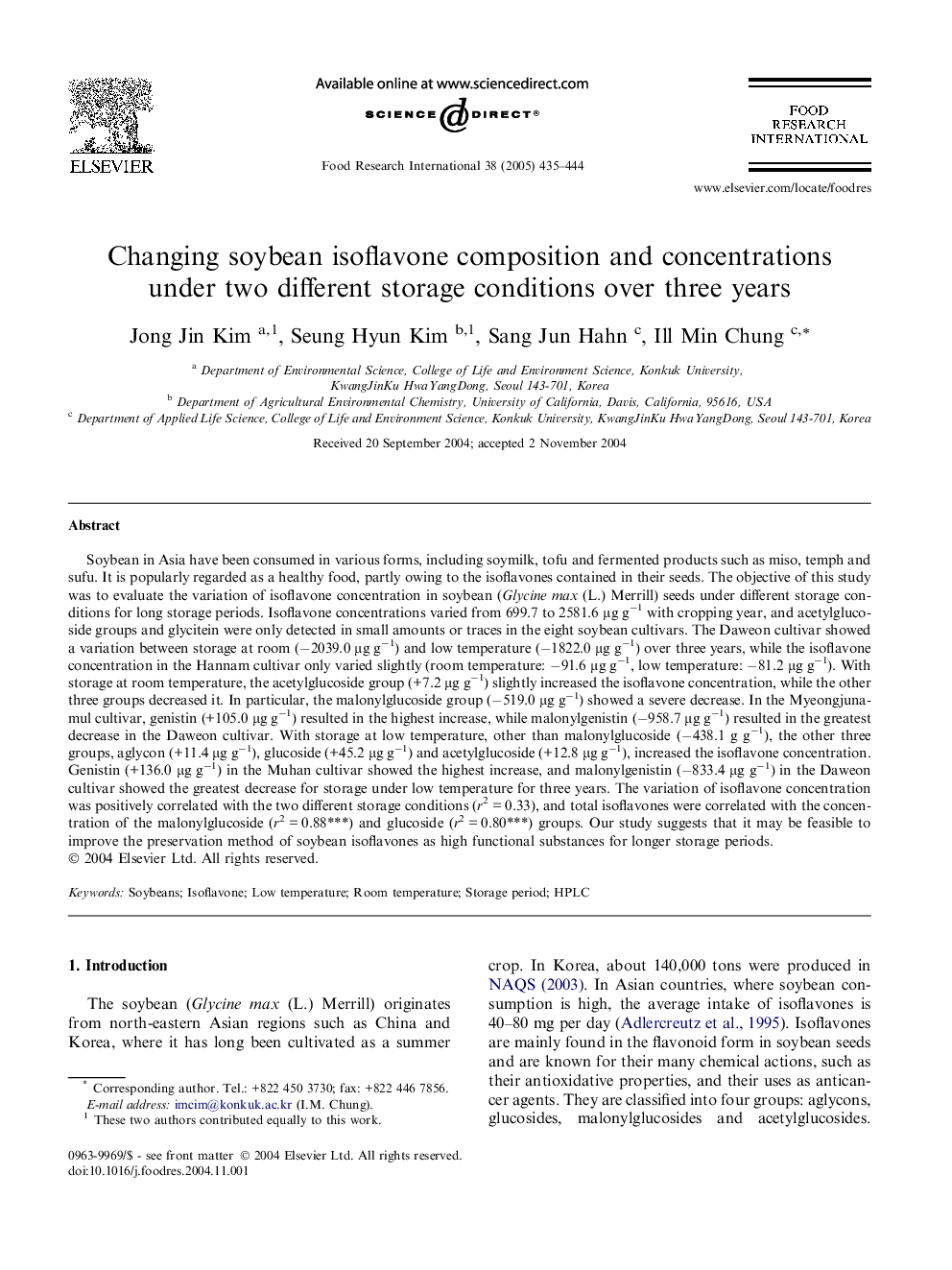| Article ID | Journal | Published Year | Pages | File Type |
|---|---|---|---|---|
| 9487711 | Food Research International | 2005 | 10 Pages |
Abstract
Soybean in Asia have been consumed in various forms, including soymilk, tofu and fermented products such as miso, temph and sufu. It is popularly regarded as a healthy food, partly owing to the isoflavones contained in their seeds. The objective of this study was to evaluate the variation of isoflavone concentration in soybean (Glycine max (L.) Merrill) seeds under different storage conditions for long storage periods. Isoflavone concentrations varied from 699.7 to 2581.6 μg gâ1 with cropping year, and acetylglucoside groups and glycitein were only detected in small amounts or traces in the eight soybean cultivars. The Daweon cultivar showed a variation between storage at room (â2039.0 μg gâ1) and low temperature (â1822.0 μg gâ1) over three years, while the isoflavone concentration in the Hannam cultivar only varied slightly (room temperature: â91.6 μg gâ1, low temperature: â81.2 μg gâ1). With storage at room temperature, the acetylglucoside group (+7.2 μg gâ1) slightly increased the isoflavone concentration, while the other three groups decreased it. In particular, the malonylglucoside group (â519.0 μg gâ1) showed a severe decrease. In the Myeongjunamul cultivar, genistin (+105.0 μg gâ1) resulted in the highest increase, while malonylgenistin (â958.7 μg gâ1) resulted in the greatest decrease in the Daweon cultivar. With storage at low temperature, other than malonylglucoside (â438.1 g gâ1), the other three groups, aglycon (+11.4 μg gâ1), glucoside (+45.2 μg gâ1) and acetylglucoside (+12.8 μg gâ1), increased the isoflavone concentration. Genistin (+136.0 μg gâ1) in the Muhan cultivar showed the highest increase, and malonylgenistin (â833.4 μg gâ1) in the Daweon cultivar showed the greatest decrease for storage under low temperature for three years. The variation of isoflavone concentration was positively correlated with the two different storage conditions (r2 = 0.33), and total isoflavones were correlated with the concentration of the malonylglucoside (r2 = 0.88***) and glucoside (r2 = 0.80***) groups. Our study suggests that it may be feasible to improve the preservation method of soybean isoflavones as high functional substances for longer storage periods.
Related Topics
Life Sciences
Agricultural and Biological Sciences
Food Science
Authors
Jong Jin Kim, Seung Hyun Kim, Sang Jun Hahn, Ill Min Chung,
